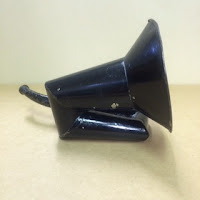 Possibly
one of the most interesting tools on a farm was the cream separator. Milk from cows was poured into the cream
separator which seemed to magically separate the milk from the cream instantly. When you look at it you wonder how can it
just separate the liquid? Here’s
how: using centrifugal force. Who says you don’t need to know something
about physics working on a farm.
Possibly
one of the most interesting tools on a farm was the cream separator. Milk from cows was poured into the cream
separator which seemed to magically separate the milk from the cream instantly. When you look at it you wonder how can it
just separate the liquid? Here’s
how: using centrifugal force. Who says you don’t need to know something
about physics working on a farm.
Raw
milk has a mix of big and small butterfat particles. They’re held in a kind of suspension because they
weigh more than other parts of the whole milk, kind of like mixing oil with
water. So, some
lucky person got to stand by the cream separator and turn the handle on the
side which caused the separator bowl to spin around really, really fast. This forced the heavier milk to be pulled
towards the walls of the separator while the lighter cream would collect in the
middle. Now the milk and cream could
flow out of separate spouts into collection buckets. This was way more efficient, faster, not to
mention safer than having raw milk sit in a pan until the cream naturally rose
to the top of the liquid.
 The one in the pictures from our collection is a Vega R6 model made in Sweden. As
you can see in the picture below, the handle has “65 per min” on it.
The one in the pictures from our collection is a Vega R6 model made in Sweden. As
you can see in the picture below, the handle has “65 per min” on it. 
Cream
separators are still used today, in fact, you can buy electric table top models
for your own home. Some old technologies really do stand the test of time.
If you want to see a similar model in action, check out the YouTube video below. No wonder people in by-gone years were more fit than we are today!

















